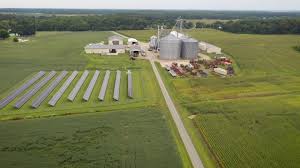Many people and organizations today have a renewed interest in project management within the agricultural sector. In the past, project management primarily focused on providing schedule and resource data to top management in just a few industries, such as the military and construction.
However, today’s project management involves much more, extending to every industry, including agriculture. New technologies and the use of interdisciplinary and global work teams have significantly impacted the way projects are managed.
Read Also: How to Extract and Package Snail Slime (Snail filtrate) for Commercial Use
Project Management in Agriculture

Project management refers to the management of projects, which are temporary, non-routine, one-time endeavors undertaken to produce a definite product or offer a unique service.
It utilizes a set of tools, techniques, principles, and methods for planning and executing project work effectively with the objective of completing the project within the defined timeline, budget, and specifications.
Project management is described as “the application of knowledge, skills, tools, and techniques to project activities to meet the project requirements.” In agriculture, project managers must meet the specific scope, time, cost, and quality requirements while also facilitating the process to address the needs and expectations of everyone involved or affected by the project.
Project Stakeholders in Agricultural Projects
Stakeholders are people involved in or affected by project activities, including the project sponsor, project team, support staff, customers, users, suppliers, and sometimes even opponents to the project. These stakeholders often have varying needs and expectations.
For example, in an agricultural irrigation project, the project sponsors could be a farming cooperative or government body. They would be the people funding the project, and they might be working within a tight budget.
They would need the project manager to provide accurate estimates of costs and a realistic timeline for completion. Stakeholders in this case would also include the project manager overseeing the construction of the irrigation system, the project team of workers, engineers, and technicians, as well as suppliers providing materials and equipment.
Other stakeholders could include local authorities or environmental agencies concerned with ensuring the project adheres to regulations and minimizes environmental impacts.
There could also be opposition from neighboring communities affected by the construction or changes in land use. Managing stakeholder needs and expectations is critical throughout the project.
Key Project Management Knowledge Areas in Agriculture
Project management knowledge areas describe essential competencies that project managers must develop. The core knowledge areas in agricultural project management include:
1. Project Scope Management: Involves working with stakeholders to define and manage all the work required to complete the project successfully.
2. Project Time Management: Includes estimating the duration of activities, developing a project schedule, and ensuring timely completion. For instance, timing might be critical in seasonal crop management.
3. Project Cost Management: Consists of preparing and managing the project budget to ensure efficient use of resources.
4. Project Quality Management: Ensures that the project meets or exceeds the quality standards necessary for success, whether in crop production, resource management, or equipment usage.
Read Also: The Health Benefits of Using Accent Seasoning on your Cooking
Facilitating Knowledge Areas in Agricultural Projects

In addition to core knowledge areas, four facilitating knowledge areas assist in achieving project objectives:
1. Project Human Resource Management: Involves making effective use of the people involved in the project, such as farmers, agronomists, or laborers.
2. Project Communications Management: Involves generating, collecting, and disseminating project information to all stakeholders.
3. Project Risk Management: Includes identifying, analyzing, and responding to risks such as droughts, pest infestations, or equipment failures that could threaten the project.
4. Project Procurement Management: Involves acquiring necessary goods and services from external sources, such as farm inputs, tools, and machinery.
Project Integration in Agricultural Project Management
Project integration management coordinates all aspects of the project, ensuring alignment between the core and facilitating knowledge areas. This holistic approach ensures that the project remains on track in terms of scope, time, cost, and quality while addressing any challenges or changes that arise.
Project management in agriculture is a crucial aspect of modern agricultural practices, helping streamline processes, optimize resources, and achieve better outcomes for projects. Effective management ensures that agricultural projects meet their objectives, contributing to overall productivity and sustainability in the sector.
Do you have any questions, suggestions, or contributions? If so, please feel free to use the comment box below to share your thoughts. We also encourage you to kindly share this information with others who might benefit from it. Since we can’t reach everyone at once, we truly appreciate your help in spreading the word. Thank you so much for your support and for sharing!
Read Also: A Child’s Guide to Castle Grayskall Toys: The Perfect Gift for Your Little Knight or Princess






